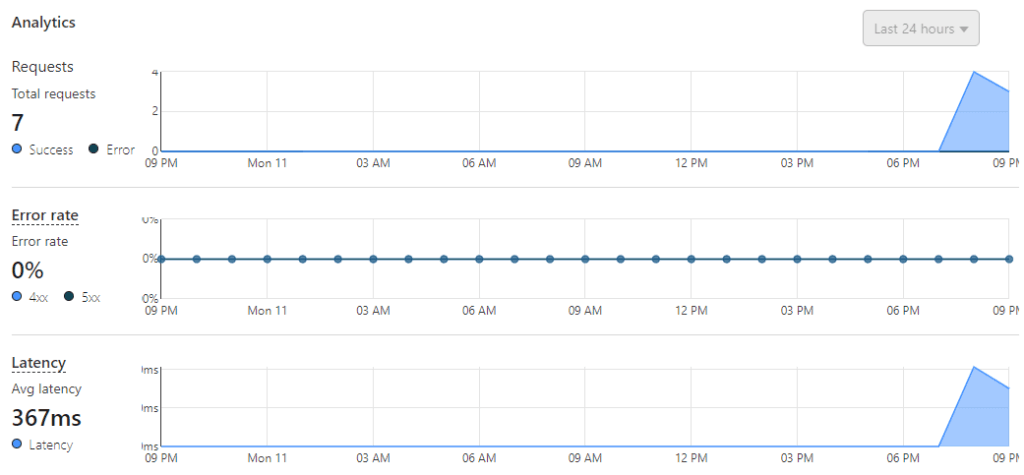As companies and applications grow, so does the demand for efficient, scalable, and well organised digital infrastructures. APIs (Application Programming Interfaces) have become essential components of many websites and organisations web-services. One widely adopted best practice and often over-looked is hosting APIs on a subdomain, such as api.example.com. But why is this approach so prevalent, and what benefits does it bring?
Here’s a look at why hosting APIs on a subdomain can provide clarity, security, flexibility, and scalability to any web infrastructure.
1. Organizational Clarity and Separation of Concerns
Hosting APIs on a subdomain allows for a clear separation between the main website and its API. This division can help developers, clients, and end-users understand that they are dealing with distinct resources.
- Simplifies Development: Developers can work on the main site’s functionality and the API separately, reducing the chance of code overlap, misunderstandings on what it is or compatibility conflicts. ie Someone changing a .htaccess file and breaking everything at 1am!
- Reduces Complexity for Clients: By designating a clear endpoint, users know exactly what is strictly website related and what is the API component which will have a wider impact. The last thing you want is the customer deleting or replacing the entire website and forgetting about the API!
2. Enhanced Security Control
APIs require different security settings than a standard website. Hosting an API on a subdomain provides the flexibility to implement tailored security configurations without impacting the rest of the website.
- Separate Security Policies: APIs often handle sensitive data and may require advanced authentication and authorization layers, such as OAuth, rate limiting requests, or IP whitelisting. By isolating the API on a subdomain, these configurations can be applied separately and far more easily, reducing potential security risks and unintended consequences. For some organisations the API may be hosted locally or within a VPN and not accessible to the open internet.
- Easier Monitoring and Logging: Monitoring and logging security events for a dedicated subdomain is often simpler. You can set up logging specifically for the subdomain, making it easier to spot unusual traffic, activity patterns and potential breaches.

3. Improved Scalability and Load Balancing
Hosting an API on a subdomain allows it to scale independently of the main website. This is especially important for applications that may need to handle large amounts of data traffic without affecting the main user-facing site.
- Independent Resource Allocation: Hosting on a separate subdomain enables you to allocate specific resources for the API, such as servers or caching solutions, without impacting the main site. This can be especially helpful once the API starts growing and needs to be hosted on its own dedicated VPS or server or with changing requirements such as what platform the website runs on..
- Load Balancing: With a separate subdomain, load balancers can be configured to manage API requests independently, ensuring that traffic spikes on the main site don’t slow down the API, and vice versa. This is far easier if their is no website on the same domain.
4. Simplified Deployment and Version Control
APIs are often updated or modified based on changing business needs. Hosting an API on a subdomain allows for versioning, testing, and deployment strategies that minimize disruption.
- Easier Versioning: With a subdomain, it’s easy to add versioning paths, such as
v1.api.example.comorapi.example.com/v2, for newer versions of the API. This allows developers to deprecate old versions gradually, ensuring clients can adapt to changes without a service interruption. - Safe Deployment and Testing: A separate subdomain allows you to set up staging or testing environments (
test.api.example.com) where developers can safely test API changes before releasing them into production. This strategy reduces the likelihood of service disruptions due to faulty deployments.
5. Better Performance with Separate Caching Policies
Web pages and APIs typically have different caching needs. While a website may need short-term caching due to dynamic content, APIs often benefit from longer caching to reduce repeated requests.
- Dedicated Cache Control: By placing the API on a subdomain, you can apply caching policies specific to API resources, optimizing response times and reducing load on servers. For instance, static API responses, like frequently accessed product details, can be cached for a longer period without affecting the main site’s dynamic content or strictly dynamic requests being hard coded to skip the cache.
- Enhanced Speed and Reduced Latency: With proper caching policies and network optimisation, API responses can be prioritised across the network or internet delivered faster access.
Conclusion
Hosting APIs on a subdomain is a best practice that provides greater clarity, enhanced security, scalability, easier deployment, optimised caching, and specialised analytics tracking. This approach not only improves the performance and security of the API but also helps developers and administrators manage, scale, and enhance the API over time with less risk of impact on the main website. It’s far easier to ensure the API is properly setup at the beginning, before it is hardcoded into everything!
What best practices do you think are most important when designing API’s? Let us know in the comments below